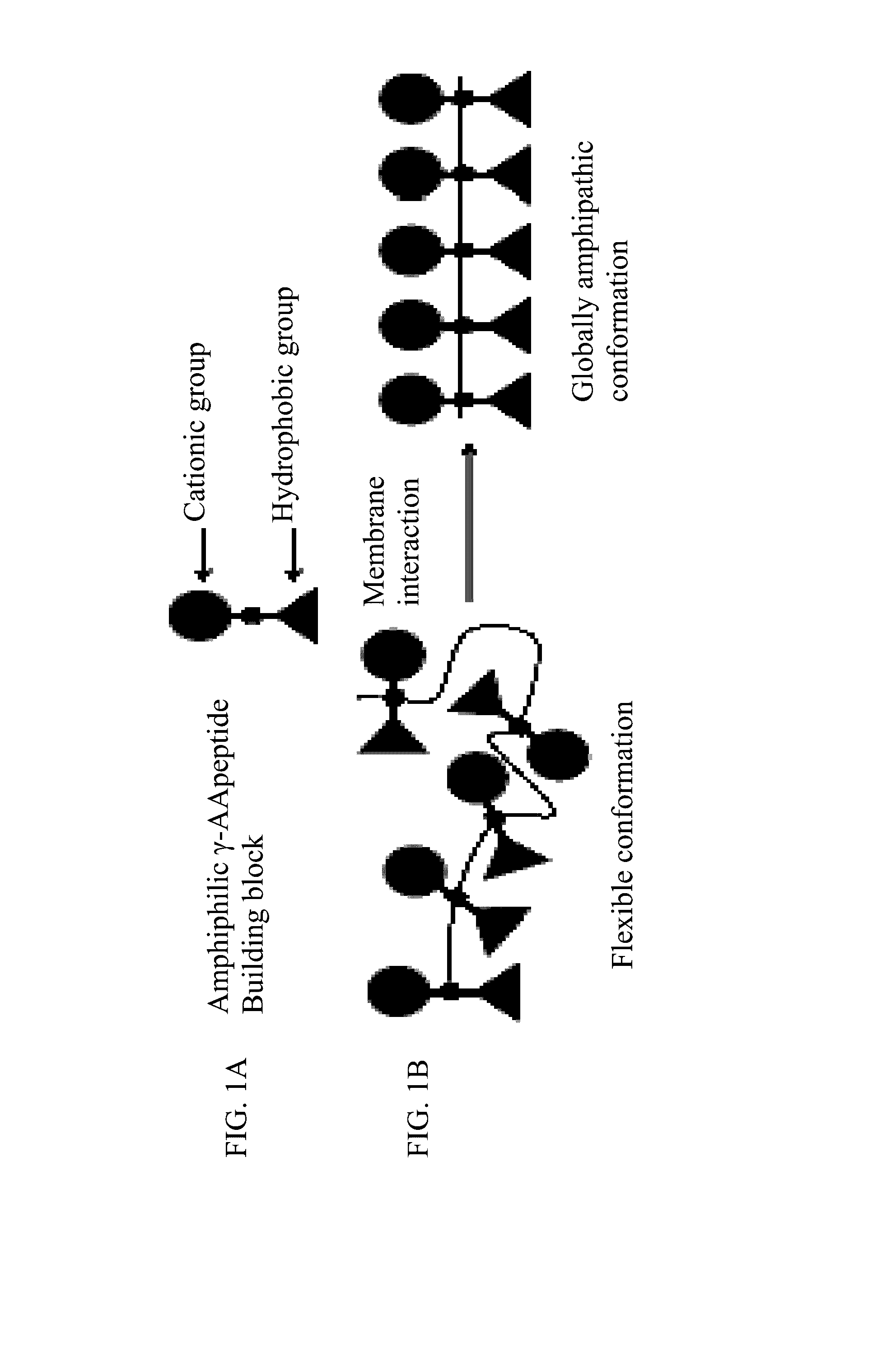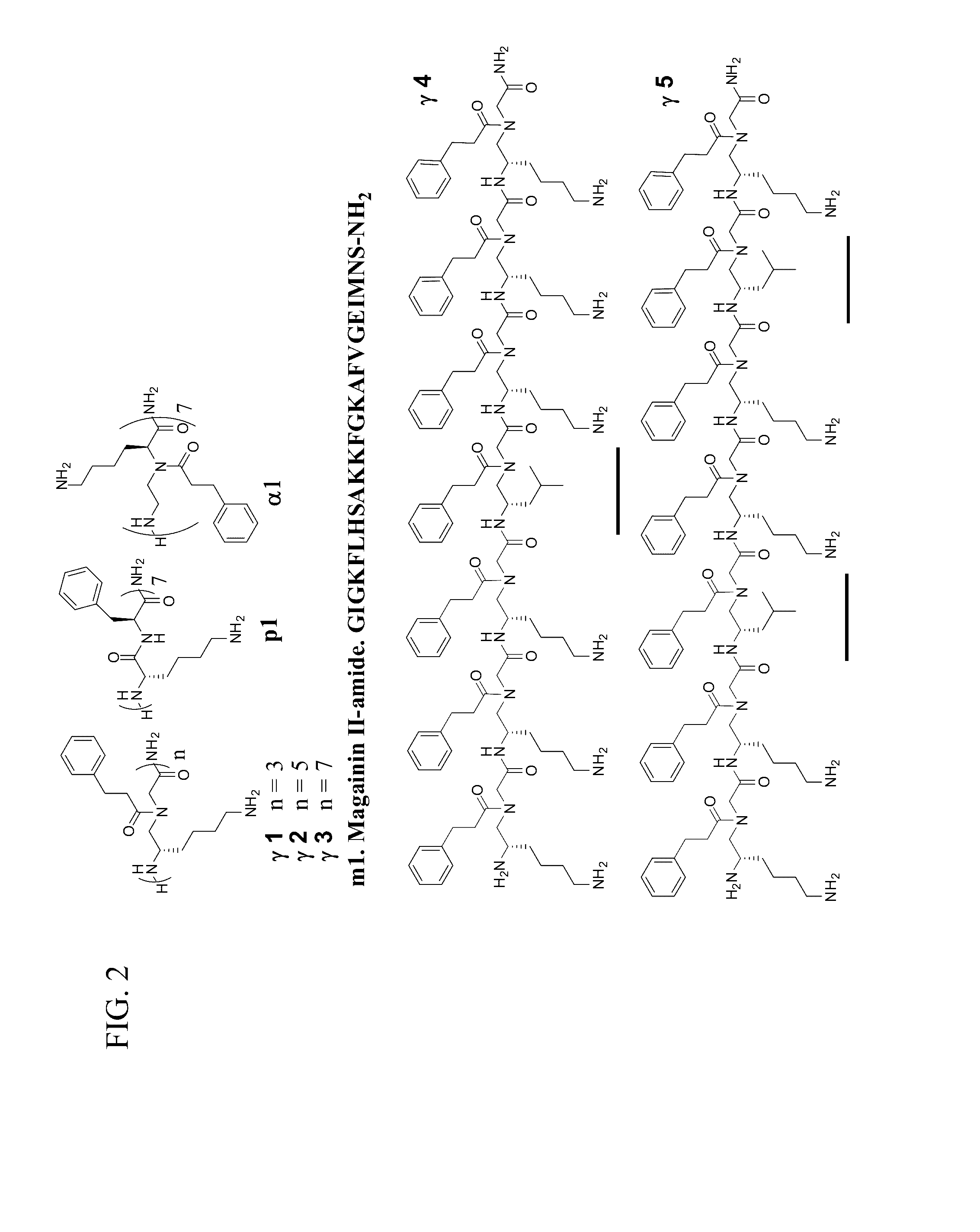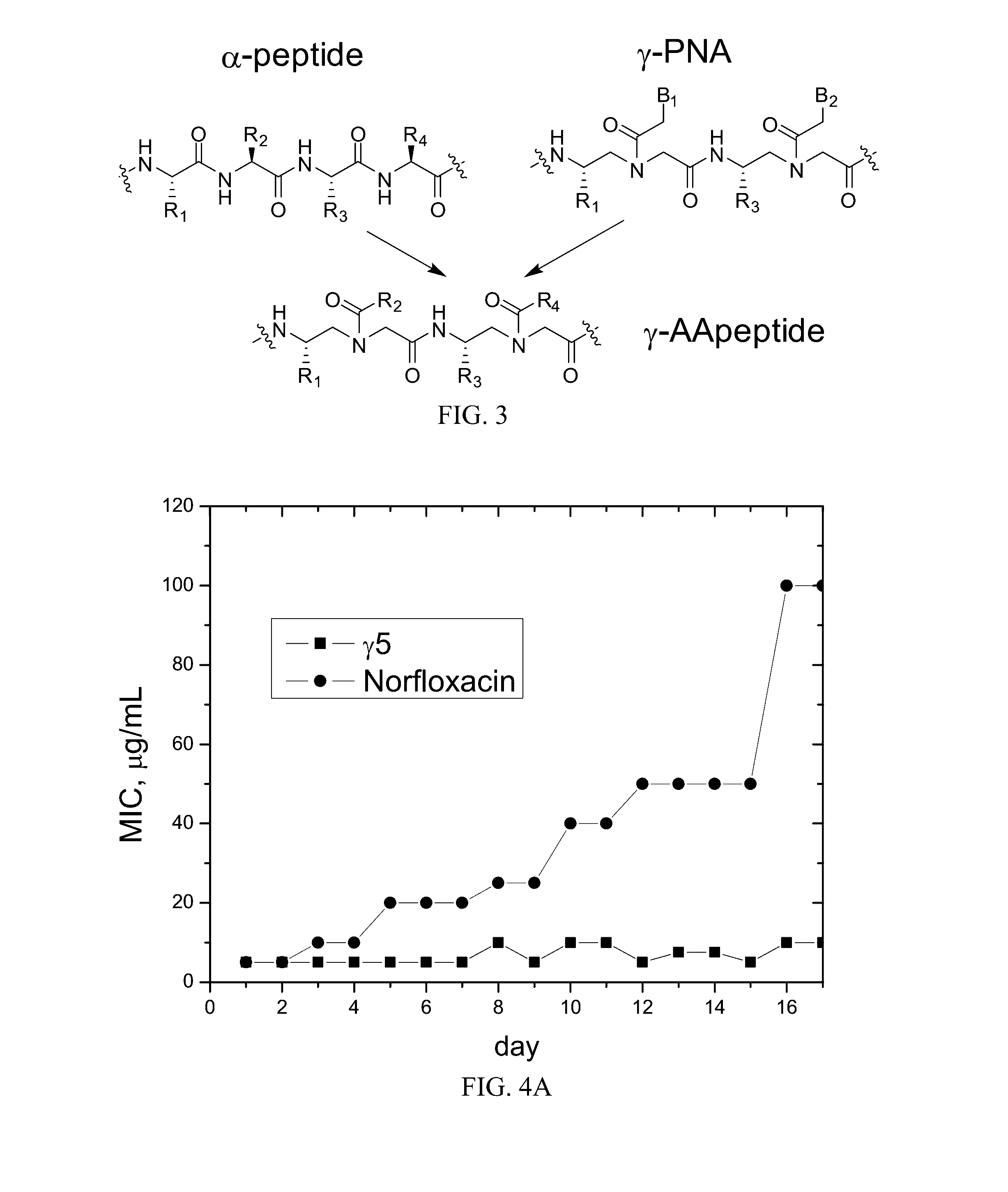Gamma-aapeptides with potent and broad-spectrum antimicrobial activity
a broad-spectrum, potent technology, applied in the direction of antibacterial agents, peptide/protein ingredients, instruments, etc., can solve the problems of complex rational design of gamma-aapeptides, and achieve the effect of avoiding the development of resistance to gamma-aapeptides and being non-toxi
- Summary
- Abstract
- Description
- Claims
- Application Information
AI Technical Summary
Benefits of technology
Problems solved by technology
Method used
Image
Examples
example 1
Design and Activity of γ-AApeptides
[0069]We prepared γ-AApeptide sequences (depicted in FIG. 2) and tested their antimicrobial activity against a range of clinically-relevant Gram-negative and Gram-positive bacteria, as well as the fungus C. albicans. γ1, γ2, γ3 are γ-AApeptides of different lengths that are composed of amphiphilic γ-AApeptide building blocks. γ4 contains one hydrophobic building block while γ5 contains two hydrophobic building blocks, an attempt to tune overall hydrophobicity of γ-AApeptides. As controls, we included AMP magainin II (ml) (Padhee et al., 2011), a 14-mer conventional peptide p1 (Padhee et al., 2011) with alternative phenylalanine and lysine residues, and the most potent antimicrobial α-AApeptide α1 reported by us recently (Padhee et al., 2011). The antimicrobial activity of these oligomers was tested and listed in Table 1. Their hemolytic activity was also tested to evaluate their selectivity.
[0070]A few sequences show very potent broad-spectrum acti...
example 2
Derivatization of γ-AApeptides
[0083]Lipidated and cyclic γ-AApeptides are also show potent and broad-spectrum activity. The most potent linear sequence, γAA1 (γAA5 of Example 1), is also listed in Table 3. For comparison, pexiganan (in Phase III clinical trials, a synthetic antimicrobial peptide) is also included; the data is taken from Chongsiriwatana et al. (2008), Chongsiriwatana et al. (2011), Ge et al. (1999) and Hicks et a. (2007). The results show that γAA1 (γAA5 of Example 1) and the lipidated and cyclic γ-AA peptides are generally comparable or more effective as antimicrobial agents. Lipidated γAA2 did not cause resistance to the drug (lipidated γAA2; see FIG. 4B).
Structure:
[0084]
TABLE 3MIC (μg / ml)OrganismγAA1γAA2γAA3γAA4γAA5γAA6γAA7PexigananGram-negativeE. coli2.5-5 2.51.6-3.13.1-6.312.5-2525-502.516-32K. pneumoniae5512.5-25 >10081050 8-16(causing pneumonia)P. aeruginosa25-5025-503-6 6-128102.5 6-12Gram-PositiveB. subtilis22.51.6-3.121223.9S. epidermidis (multi-3.1-6.341....
example 3
The Design and Synthesis of Cyclic γ-AApeptides
[0085]The design of the cyclic antimicrobial γ-AApeptides of the current invention is based on the linear antimicrobial γ-AApeptides (FIG. 7) (Niu, Padhee et al., 2011; Padhee et al., 2011). Potent antimicrobial activity can be achieved by joining amphiphilic building blocks together to form a globally amphipathic conformation upon interaction with bacterial membranes. The activity and selectivity can be fine-tuned by varying the ratio of cationic / hydrophobic groups.
1. Synthesis and Characterization of γ-AApeptides Building Blocks
[0086]To achieve a global distribution of cationic and hydrophobic groups along the backbone, we prepared amphiphilic building blocks with a cationic group and a hydrophobic group on either side (FIG. 7A). By joining these building blocks together and cyclizing the resulting oligomer (FIG. 7B), a global amphiphilicity is achieved upon binding to bacterial membranes (Niu, Padhee et al., 2011). The amphiphilic bu...
PUM
 Login to View More
Login to View More Abstract
Description
Claims
Application Information
 Login to View More
Login to View More - R&D
- Intellectual Property
- Life Sciences
- Materials
- Tech Scout
- Unparalleled Data Quality
- Higher Quality Content
- 60% Fewer Hallucinations
Browse by: Latest US Patents, China's latest patents, Technical Efficacy Thesaurus, Application Domain, Technology Topic, Popular Technical Reports.
© 2025 PatSnap. All rights reserved.Legal|Privacy policy|Modern Slavery Act Transparency Statement|Sitemap|About US| Contact US: help@patsnap.com



